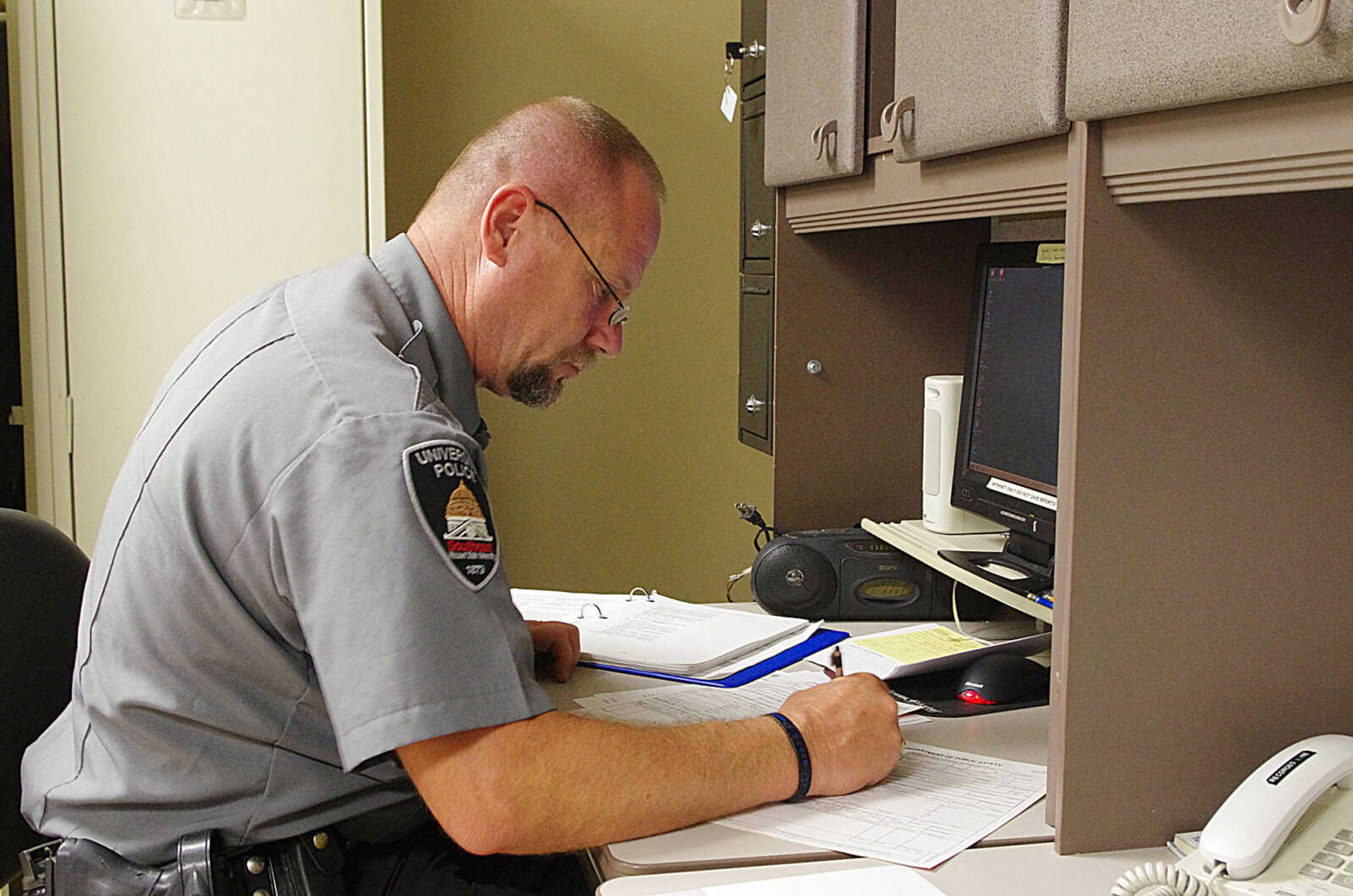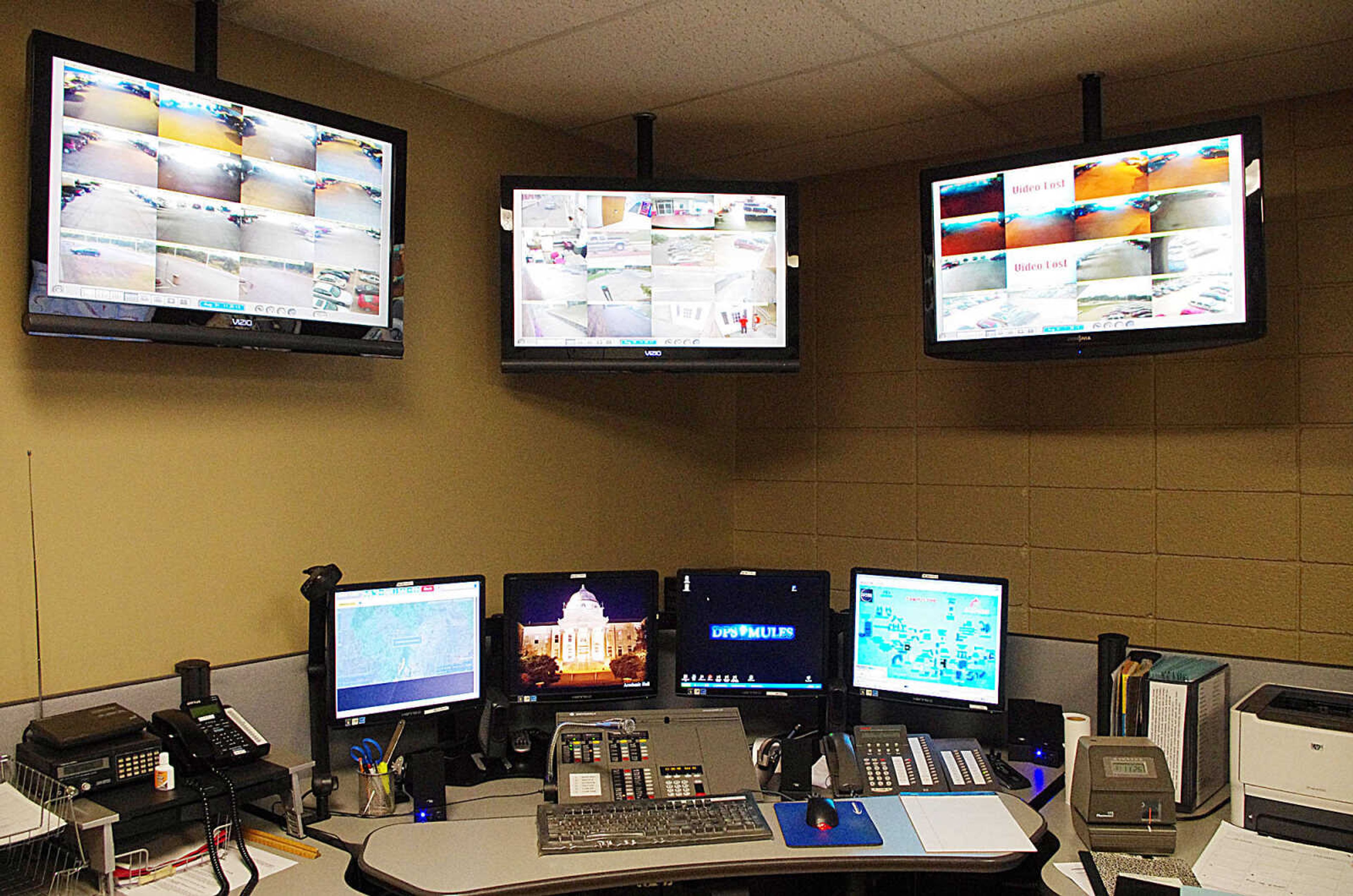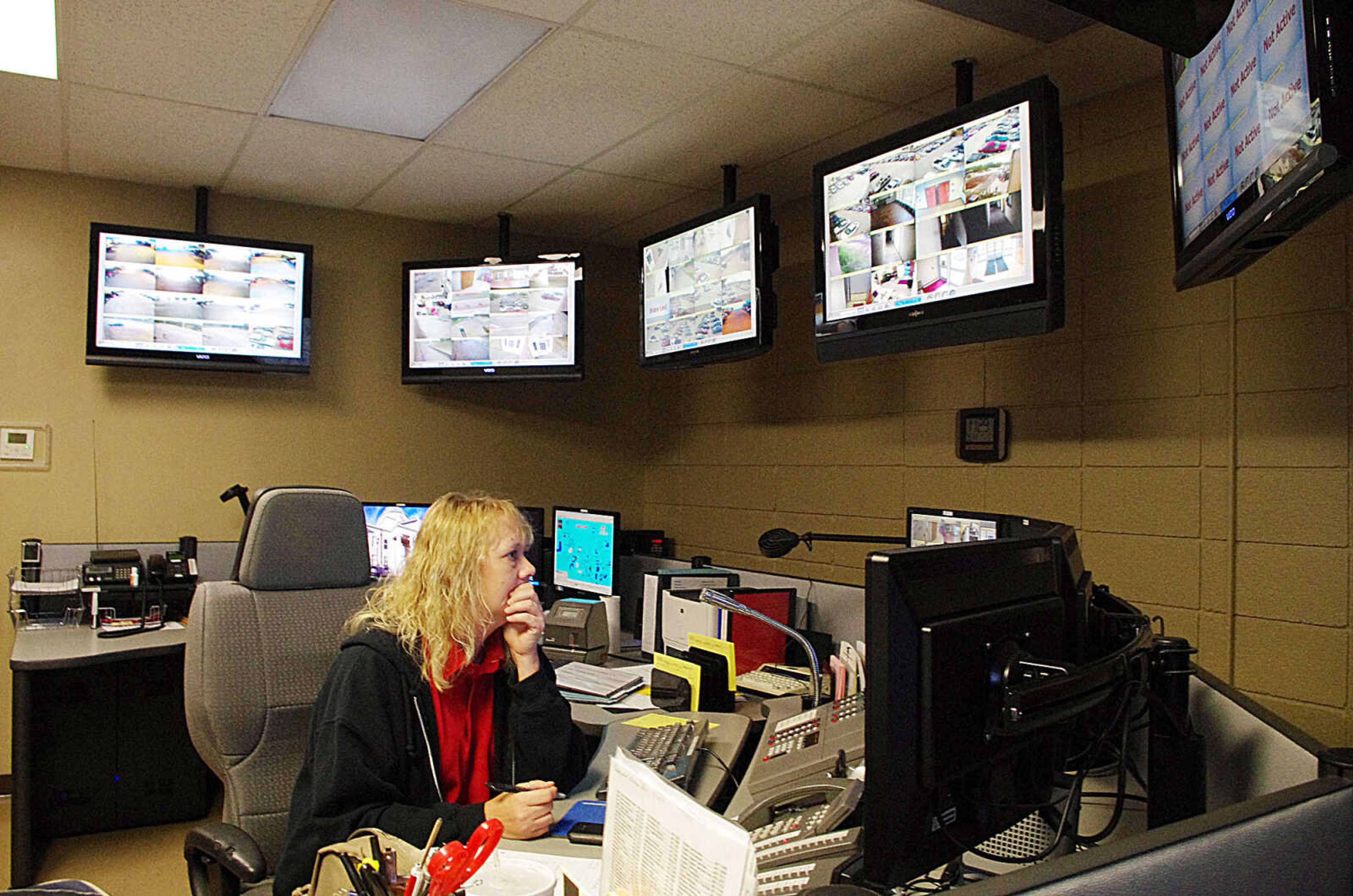Southeast emergency plan has may different options in case of crisis
When an emergency is declared Southeast emergency coordinator Doug Richards has many different options in order to secure the safety of the students, staff and faculty.
The sound of tornado sirens on the campus of Southeast Missouri State University means that students and staff living in residence halls are forced to take cover on the lower floors of their building. While a tornado has yet to strike Southeast, the university has a plan if that were to ever happen.
Since Cape Girardeau has the potential to be subject to severe thunderstorms, tornados and even earthquakes with the nearby New Madrid Fault Line, the university has a written policy that outlines actions to be taken by specific campus administrators in the event of those or other types of disasters.
"No. 1, you have to be flexible with your emergency plan, willing to modify instantly if you need to," Department of Public Safety director Doug Richards said. "And secondly, you've got to have redundancy."
Shootings on college campuses have also become a growing concern after a shooting occurred at Virginia Tech University on April 26, 2007. A student killed 32 students and faculty members before committing suicide. Since then, 20 gun-related attacks have been recorded at state colleges and universities in the United States.

"All the [residence assistants] and hall directors do ALICE [Alert, Lockdown, Inform, Counter, Evade] training," Residence Life director Dr. Bruce Skinner said. "The RAs in turn do programs with students on strategies for responding because you aren't going to be able to wait for someone to bring the plan to you. Armed intruder training is something that the university has paid a lot more attention to in recent years. We do the training with the RAs every year."
In the event of a campus emergency, the director of the Department of Public Safety serves as the emergency coordinator. This person is responsible for activating all or specific members of the campus emergency response team and establishing a command center for the team.
"We can activate parts of the team. We can activate all of the team," Richards said. "We can meet in the president's office, we can meet in my office, we can meet at our command center [at DPS] or we can meet at the command center in the basement of Dempster. We have all the emergency equipment in a situation room set up there. In a catastrophic type of situation, more than likely we would be in our situation room in our underground command center over in Dempster. That would be a rarity."
The campus emergency team consists of Southeast administrators from various university departments. If activated, each member will have responsibilities specific to their area of employment on campus. For example, coordinating responsibilities related to damage assessment is the duty of the director of facilities management.

"In the end, the person in my role needs to make sure that someone has a place to sleep, sanitation and something to eat," said Skinner, who would coordinate food and housing needs. "Those are the big three that we are going to make sure we can successfully accomplish."
Southeast President Dr. Kenneth W. Dobbins has the authority to declare a campus state of emergency after consulting the emergency coordinator.
When an emergency is declared, only registered Southeast students, faculty, staff and affiliates are authorized to be on campus. Those who cannot present a legitimate reason or evidence for being on campus may be asked to leave.
Three levels of emergency can be declared. Each level has a set of guidelines to help the emergency response team form an appropriate response.
A level one emergency can be declared if a university department responding to an occurrence does not have enough resources to deal with the situation and requires the aid of other departments.
A level two emergency can be declared if a major commitment of resources from several university departments is required to keep a situation under control, but the university does not require outside aid.
A level three emergency can be declared if all university departments commit resources to an occurrence, and the university may require outside aid to control the situation.
"We've actually had to do this on a couple of occasions since I've been director," Skinner said. "When we had the ice storm a few years ago, we provided emergency shelter for law enforcement as well as Ameren and utility contract workers."
"One of the biggest problems you have is getting your plan activated and getting the first 30 minutes to an hour under your belt," Richards said. "Getting the information flow is key from out in the field to your command center. As far as maintaining order, that would be having enough emergency personnel and even police personnel because the focus would obviously be on the safety of everybody."
In addition to explaining how to respond to a severe thunderstorm, tornado, earthquake, or active shooter, the emergency guide also includes guidelines for students to follow in the event of a civil disturbance, explosion, hazardous material spill, bomb threat, fire, terrorist attack and utility failure. It also has information on general evacuation procedures, reporting crimes and emergencies, administering first aid and recovering from a disaster. The guide can be found at the university's website or a copy can be obtained from DPS.
The plans for the emergency response team outlined in the emergency preparedness guide are meant to be a basic structure for a response to a campus emergency, rather than provide detailed reactions.
"[DPS does] not disclose a lot of our training for security and safety purposes because, depending on the type of incident, if it be a hostage or type of criminal situation, we don't want everybody to know our plan," Richards said. "Our people are systematic in their training and receive all types of police response training to be able to respond to specific needs. Understand that we have a plan for all types of emergencies, but your plan is meant to be your framework. There will be so many variations from that. That's where you have communication. You can have beautifully written plans, but the actual emergency may dictate other plans."
The telecommunications director is in charge of establishing a way for the command center to communicate with outside help and the rest of the campus, if able. The assistant vice president of Information Technology is in charge of establishing Internet availability at the command center.
"If we were in an event where an earthquake knocked down all the satellite towers, [walkie-talkies] didn't work or radios and cell phones didn't work, we can actually communicate by satellite phone to the governor's office, to the highway patrol, to the state, to our local people," Richards said.
Skinner would coordinate efforts to provide food and shelter to students, faculty and staff, campus visitors and external emergency workers.
Residence Life would also identify facilities appropriate for housing displaced residents or university guests, assist disabled students and register all students and university guests. To aid the registration process, Skinner said that Residence Life has data on each on-campus resident that includes their name, email address, hometown and phone number.
According to Skinner, Chartwells, Southeast's provider of on-campus dining options, would still provide food in the event of a disaster.
"Res Life would help coordinate the food, but it wouldn't be RAs and hall directors actually cooking," Skinner said. "We're still dependent upon Chartwells for our foods, and that's actually in their contract, that in the event of a disaster, assuming we could maintain any kind of operation, we would be still be able to run food through Chartwells."
Skinner said that he distributes Residence Life's emergency responsibilities among himself, associate director Kendra Whitcher-Skinner and assistant director Kim Fees.
"All of us are three deep. So, I'm the food and housing officer. If I'm not available, it's Kim Fees, my No. 2," Skinner said. "If he's not available, it's Kendra my associate director. Kim has the information on all of our buildings, floor layouts, where the lounges are, how many square footage, where our extra mattresses are, so it's not just 'You people sleep in the lounge.' It's 'Can we actually put beds there, where we have shower capacity, [the] number of toilets.' All of that is a big issue."






